Consider a cart being pulled by a horse with a constant velocity. The horse exerts force →FC/h on the cart. (The subsript indicates the force on the cart due to the horse). The first subscript denotes the body on which the force acts and the second due to which it acts.

Choose the correct statement (s):
−−−−−→f(Cg),→NCg,→Nhg are externel forces on a system consisting of horse and cart.
→Fhg+→fCg=0
→NCg and →FCE are action reaction pairs
→FCh and →fhC are action reaction pairs
The correct Answer is:A, B, D
(a) For the system of (horse+cart), only →Fch and →Fhc will be internal forces. All other forces will be external.
(b) As (horse+cart) system is moving with constant velocity, so net horizontal force on it should be zero.
For this →Fhg+→F(cg)=0
(c ) →NCg and →FCE can't bbe action-reaction pairs, as they act on same body.
(d) →FCh and →fhC are action-reaction pairs.
Topper's Solved these Questions
- CENGAGE PHYSICS DPPBook:CENGAGE PHYSICS ENGLISHChapter:CENGAGE PHYSICS DPPExercise:Single Correct Answer type
Explore 491 Videos
- CENGAGE PHYSICS DPPBook:CENGAGE PHYSICS ENGLISHChapter:CENGAGE PHYSICS DPPExercise:subjective type
Explore 51 Videos
- CENGAGE PHYSICS DPPBook:CENGAGE PHYSICS ENGLISHChapter:CENGAGE PHYSICS DPPExercise:Comprehension Type
Explore 31 Videos
- CAPACITOR AND CAPACITANCEBook:CENGAGE PHYSICS ENGLISHChapter:CAPACITOR AND CAPACITANCEExercise:Integer
Explore 5 Videos
- COULOMB LAW AND ELECTRIC FIELDBook:CENGAGE PHYSICS ENGLISHChapter:COULOMB LAW AND ELECTRIC FIELDExercise:Single Answer Correct Type
Explore 22 Videos
Similar Questions
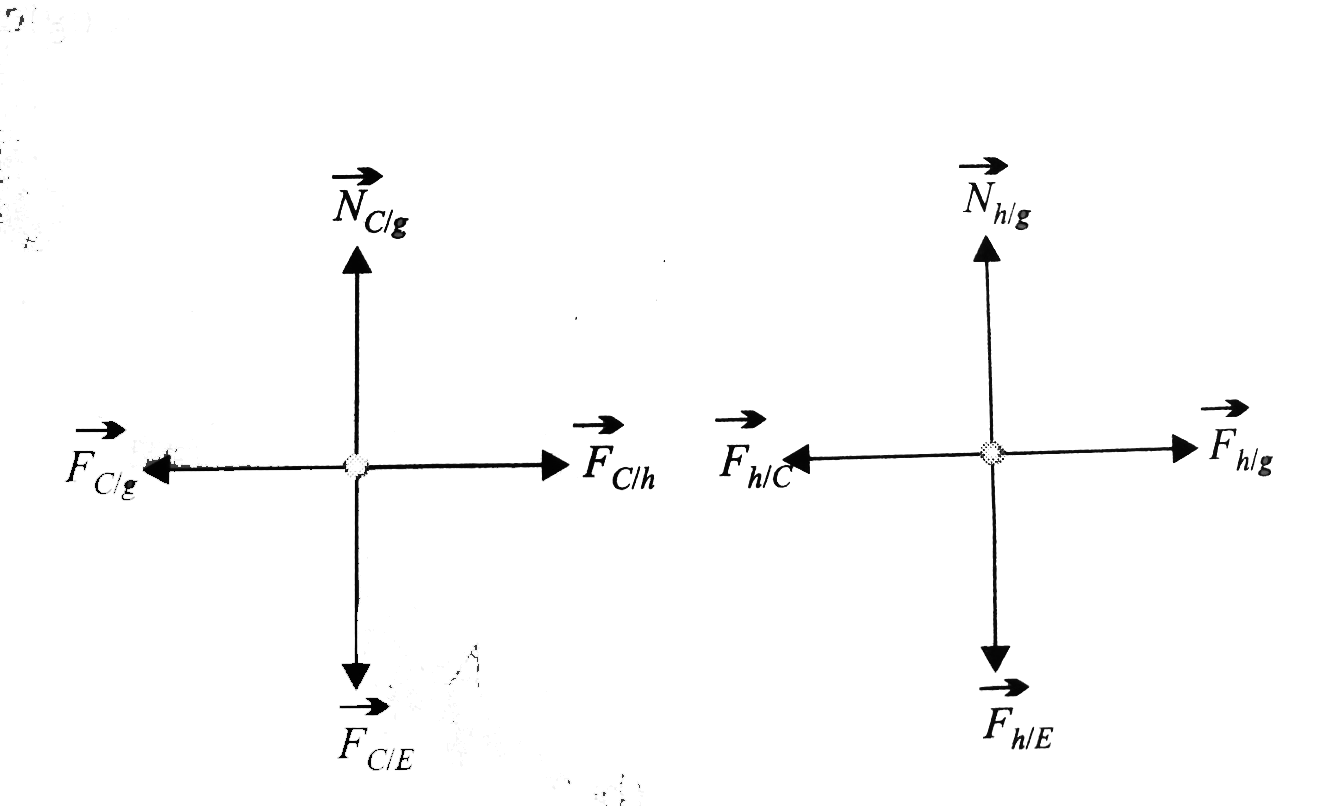
Consider a cart being pulled by a horse with constant velocity. The horse exerts force →FCh on the cart. (The subscript indicate the force on the cart due to horse.). The first subscript denotes the body on which force acts and second due to which it acts.
Choose the statements(s):
View SolutionGravitational force with which a body attracts the other is always equal to the force with which the other attracts the first. Assuming no other forces acting on the bodies, choose the correct statement.
View Solution
Knowledge Check
A force of 6 N acts on a body at rest and mass 1 kg. During this time, the body attains a velocity of 30 m/s. The time for which the force acts on the body is
A10 secB8 secC7 secD5 sec
A current of 10A flows around a closed path in a circuit which is in the horizontal plane as shown in the figure. The circuit consists oi eight alternating arcs of radii r1=0.08m and r2=0.12m. Each subtends the same angle at the centre.
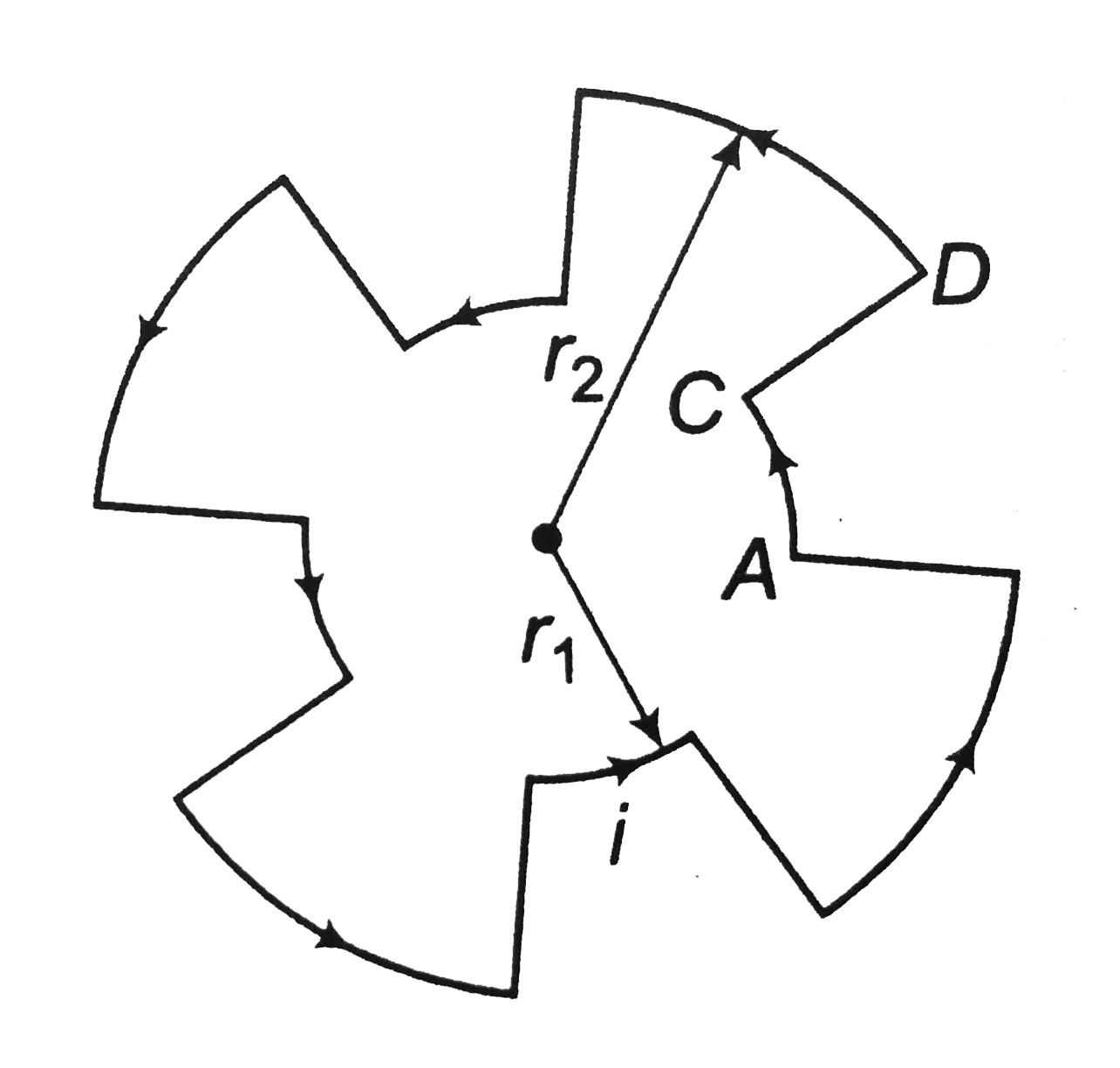
a. Find the magnetic field produced by this circuit at the centre.
b. An infinitely long straight wire carrying as current of 10A is passing through the centre of the above circuit vertically with the direction of the current being into the pane of the circuit. what is the force acting on the wire at the centre due to the current in the circuit? What is the force acting on the arc AC and the straight segment CD due to the current at the centre?
View SolutionSand is falling on a flat car being pulled with constant speed. The rate of mass falling on the cart is constant. Then the horizontal component of force exerted by the falling sand on the cart (sand particles sticks to the cart)

View SolutionA 2kg toy car can move along an x axis. Graph shows force Fx , acting on the car which being at rest at time t=0 . The velocity of the particle at t=10s is:
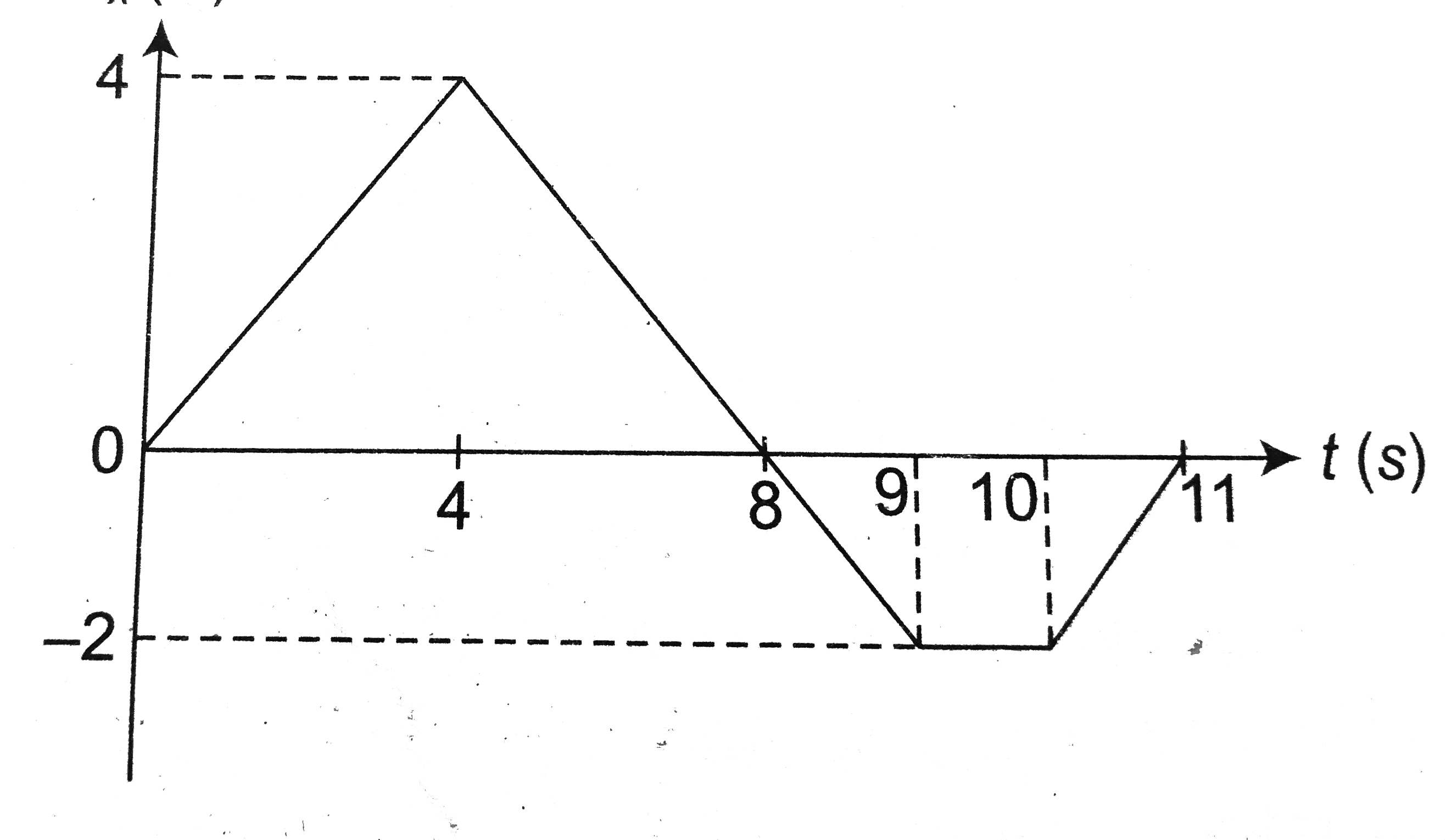
View SolutionA horizontal force F is applied to a homogeneous rectangular block of mass m, width b and height H. The block moves with constant velocity, the coefficient of friction is μk.
a. What is the greater height h at which the force F can be applied so that the block will slide without tipping over ?

b. Through which point on the bottom face of the block will the resultant of the friction and normal forces act if h=H/2?
c. If the block is at rest and coefficient of static friction is μs what are the various criteria for which sliding or tipping occurs?
View SolutionA wedge of mass m and triangular cross- section (AB = BC = CA = 2R) is moving with a constant velocity −vˆI towards a sphere of radius R fixed on a smooth horizontal table as shown in figure. The wadge makes an elastic collision with the fixed sphere and returns along the same path without any rotaion. Neglect all friction and suppose that the wedge remains in contact with the sphere for a very shot time. Δt, during which the sphere exerts a constant force F on the wedge.
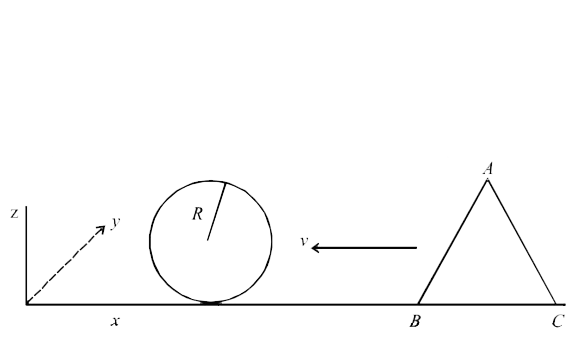
(a) Find the force F and also the normal force N exerted by the table on the wedge during the time Δt.
(b) Ler h denote the perpendicular distance between the centre of mass of the wedge and the line of action of F. Find the magnitude of the torque due to the normal force N about the centre of the wedge, during the interval Δt.
View SolutionWe know that when two equal masses are placed on a line then, gravitational force on a third mass is zero due to these two masses when the third is placed at the centre of line joining the two masses. But if third mass is placed anywhere else on the x-axis, the gravitational force acts on that mass due to these two masses. Consider a system shown in figure.
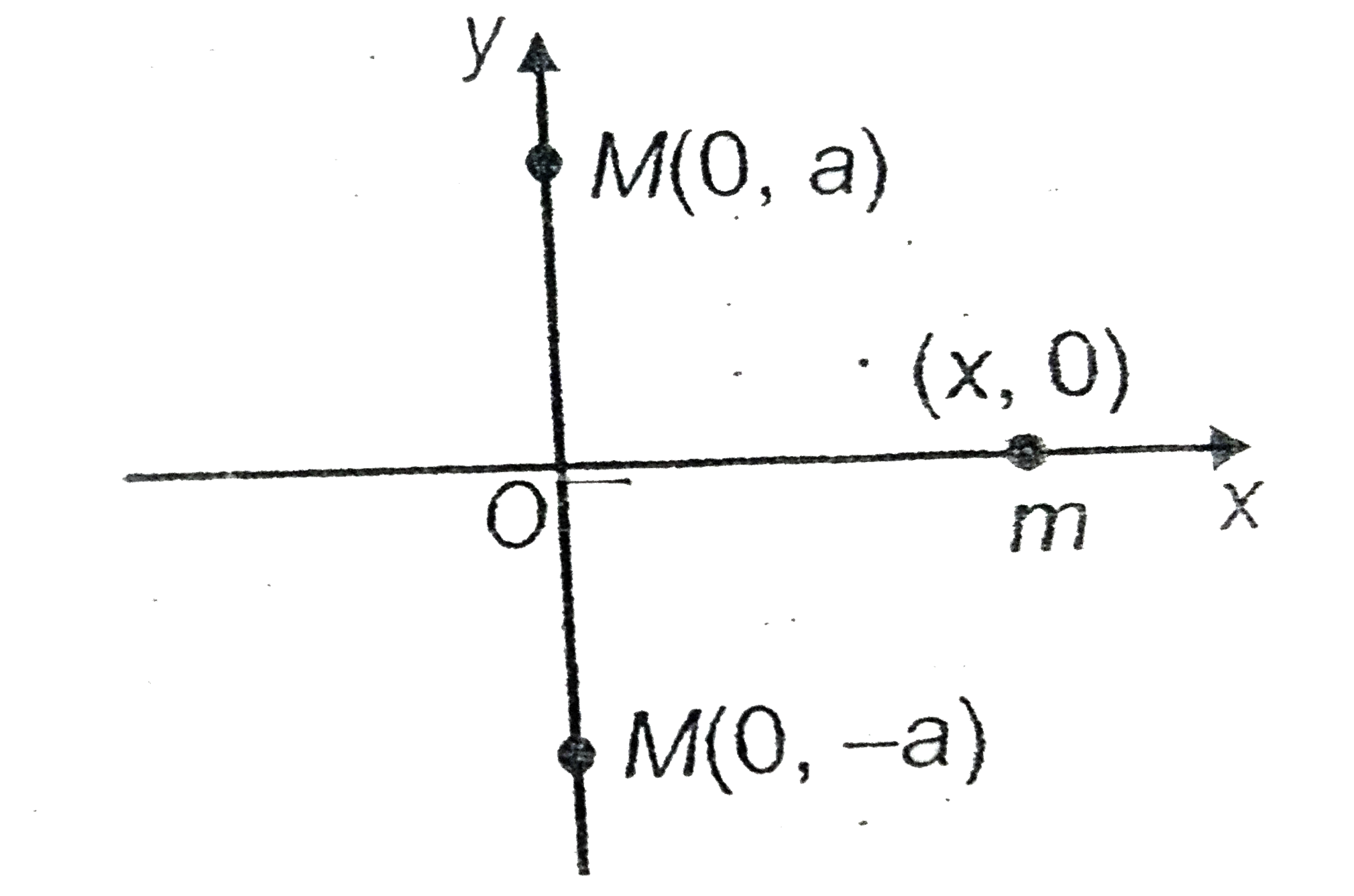
In this system two point masses of mass M each are placed at y-axis at a distance a from origin and these masses are fixed. If a third point mass of mass m is released at a distance x from origin on x-axis, then answer the following questions.
If a >> x, then which of the following statements is correct about the motion of mass m ?
View SolutionWe know that when two equal masses are placed on a line then, gravitational force on a third mass is zero due to these two masses when the third is placed at the centre of line joining the two masses. But if third mass is placed anywhere else on the x-axis, the gravitational force acts on that mass due to these two masses. Consider a system shown in figure.
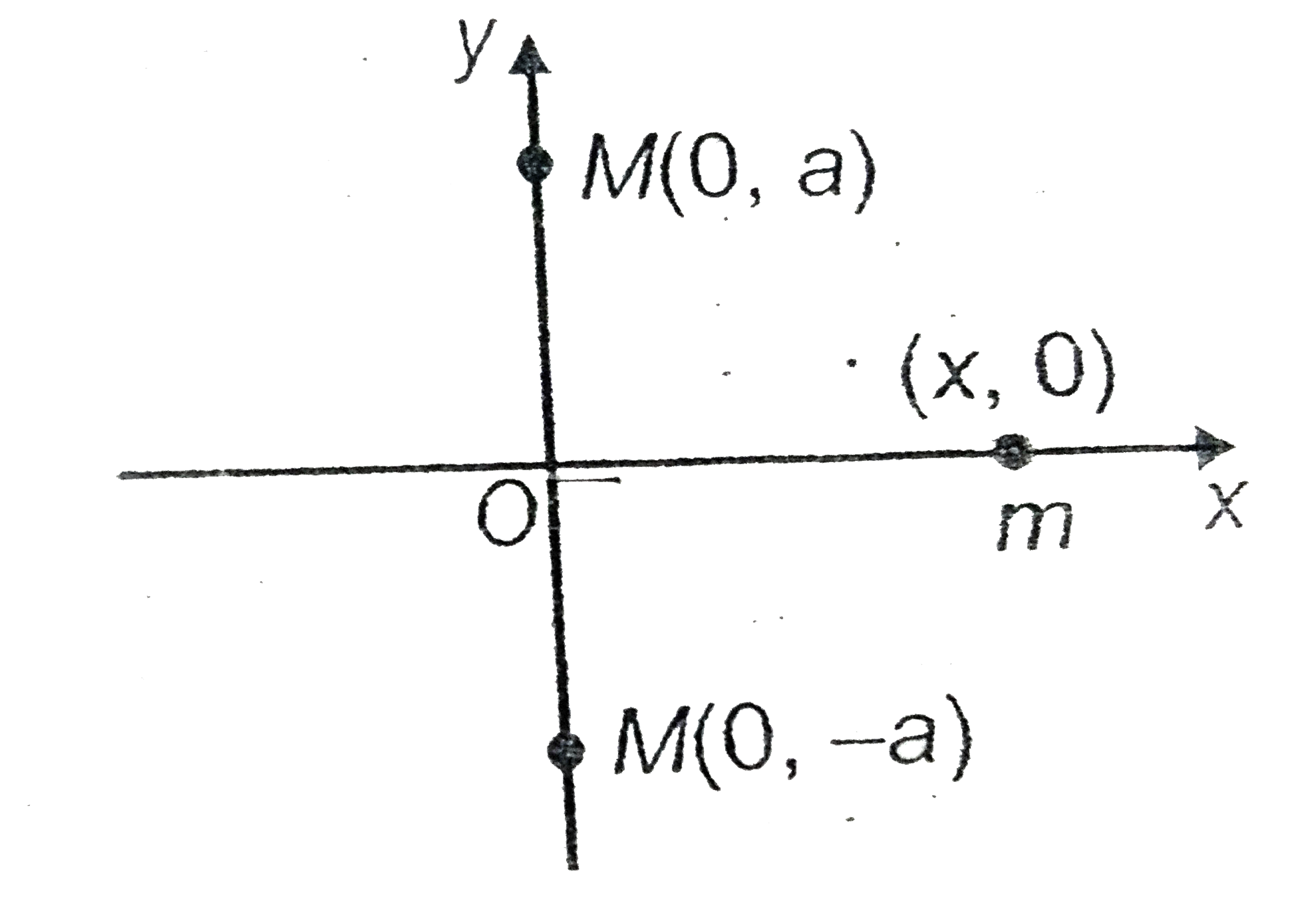
In this system two point masses of mass M each are placed at y-axis at a distance a from origin and these masses are fixed. If a third point mass of mass m is released at a distance x from origin on x-axis, then answer the following questions.
Which of the following graphs best represents the variation of force on mass m with distance x ?
View Solution
